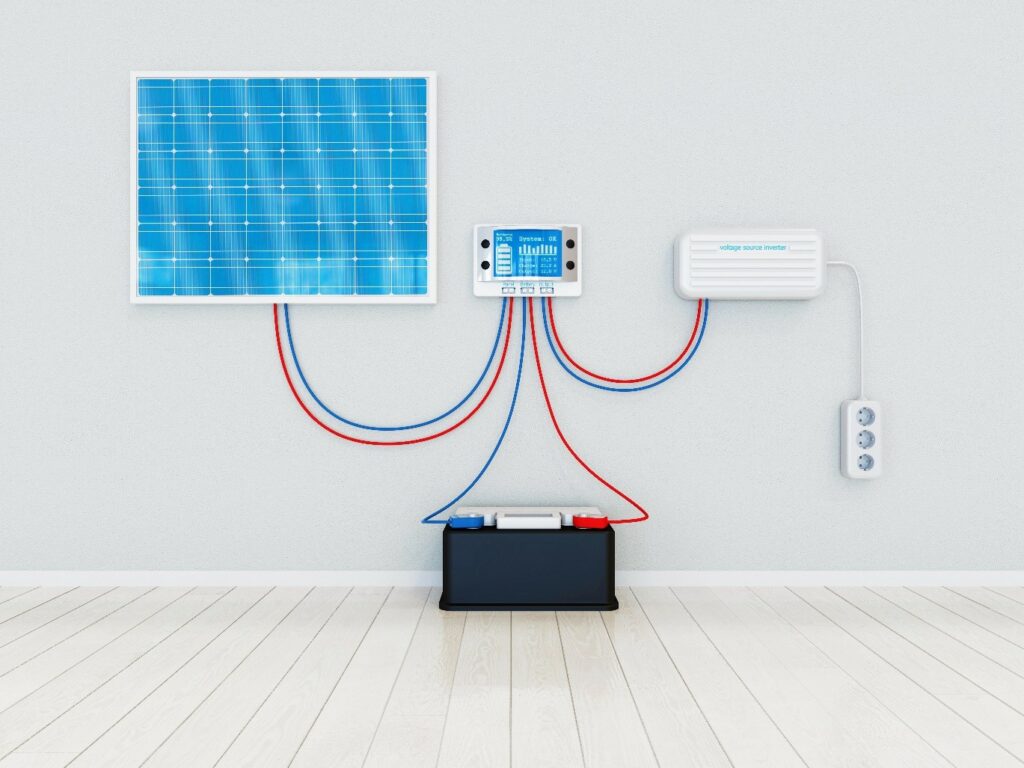Are you planning to install a new solar energy system in your home? Well, then, you should also get information about other solar accessories to ensure the panels work with high efficiency. One of the most crucial parts of a solar panel system is the solar charge controller. Invest proper time in buying this, and it can make your solar system last for years without any trouble.
In this article, we have shared almost everything you need to know about solar panel charging controllers. Let’s begin with the basics!

What is a Solar Charge Controller?
As the name suggests, the solar charge controller is a piece of equipment that controls the energy flow in the panels and provides balanced energy to the batteries.
Batteries connected to the solar panels store the excess energy in the solar panels. If this power is not kept under control, your batteries might not work properly. By attaching the solar charge controller, you can control the amperage and voltage of the solar array to an appropriate level. This way, the batteries and the load don’t get damaged.
It also ensures that the excess energy does not return to the panels, draining the batteries. This is one reason solar charge controllers are also known as high-powered voltage regulators.
Over the years, solar charge controllers have undergone many transformations. Now, you can find advanced solar panel charging controllers that come with smart sensors, Bluetooth, and whatnot. You can also control the timing and change its settings to make them work for more or fewer hours. We will discuss this in-depth in the last section of this article.
Types of Solar Charge Controllers
There are several types of solar charge controllers in the market varying in brands, sizes, prices, features, etc. But if we talk about the fundamentals, there are generally three types of charge controllers: 1-or 2-stage solar charge controller, 3-stage and/or PWM solar charge controller, and MPPT (maximum power point tracking).

Below, we have discussed each of them:
Simple 1- or 2-Stage Controllers
They are the oldest and the most basic type of solar charge controllers. They use shunt transistors or relays to control voltage in either one or two steps. They are popular because they are quite reliable and affordable.
Stage and/or PWM Controllers
PWM controllers are manufactured by top brands, but they are inexpensive and reliable. The only drawback they have is that they must only be used when the nominal voltage of the solar panels matches the battery voltage. And even in that case, they have inefficiencies in larger systems. They are also quite old and popular.
Maximum Power Point Tracking (MPPT) Controllers
The best and newest type of solar charge controller is the MPPT charge controller. They have the highest-quality and most advanced options. MPPT charge controllers do not reduce the battery voltage. Instead, they convert the excess power into amperage. They operate at the maximum power voltage and harvest higher energy. That being said, MPPT controllers are expensive as well.
How Does a Solar Charge Controller Work?
Knowing how a solar charge controller works may not be crucial for all, but it is good to know the basics of such technical devices. In this case, the function is surely quite simple. Solar charge controllers block the reverse current and make sure the battery doesn’t overcharge. They also prevent battery over-discharge and avoid any electrical overload. Moreover, the controllers also display the flow of power and battery status.
They do it by detecting the battery’s voltage level and closely regulating the current flow from the panels to the battery.
How to Select the Right Solar Panel Charging Controller
Finding the right solar panel charger is not as simple as knowing how to charge battery with solar panel. You need to consider different parameters to finally make a decision.
Below we have shared a few things to keep in mind when buying a solar panel charger. Take note!
- Voltage: It is crucial to buy a solar panel controller that is compatible with your system’s voltage. So, this is the first thing to consider. This will ensure proper functioning. Some solar charge controllers can match with only one voltage, while the pricier MPPT ones can match with different voltages as well.
- Current Capacity: The second thing you need to do is figure out the current capacity you need. Make sure you pick an option that can handle the large amounts of energy your solar panel array produce. The thumb rule for this is to always go for bigger devices than smaller ones.
Other than these two crucial things, you can also focus on features like:
- LCD display: This will help you monitor the system’s charge, voltage, current, temperature, and much more. Many newer models have an easy-to-read display that makes it easy to monitor the system.
- Remote Access: If you have a good budget and you travel frequently, it is wise to invest in a solar charge controller that can be managed from anywhere.
- Load Control: This feature allows you to turn off your battery’s output when the charge controller senses the battery bank is too low. This helps you manage the output based on your needs.
- Extra features: It all depends on your budget but if you have enough to spend, try to explore features like an auto-saving function, MCB Protection, smart charging, and fault detection feature.
If you still find yourself confused, do not worry, and reach out to us. You can talk to our experts at Luminous India to find out which solar panel charge controllers would be best for you. We also have an expansive range of solar charge controllers known for their high-quality, modern features and competitive pricing.
Connect with us today, and we’ll be more than happy to be your guide.
Leave a Reply